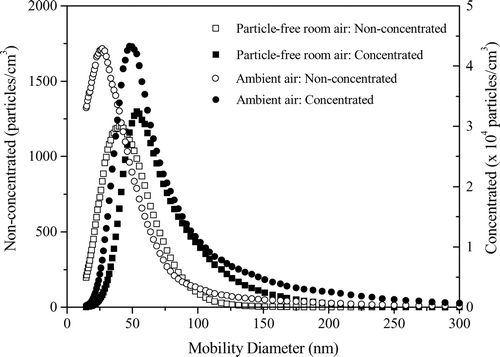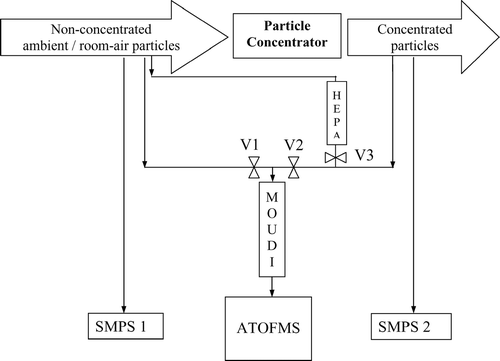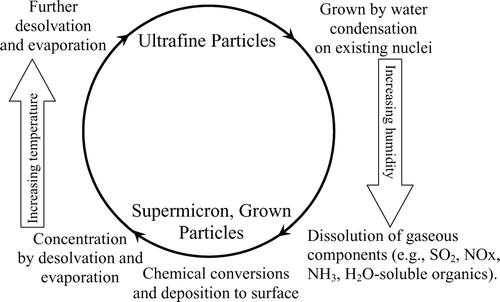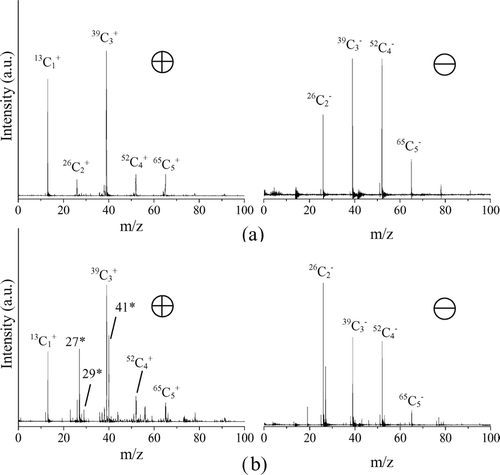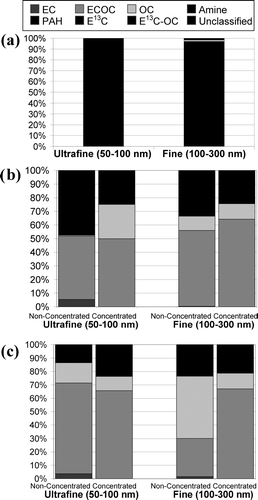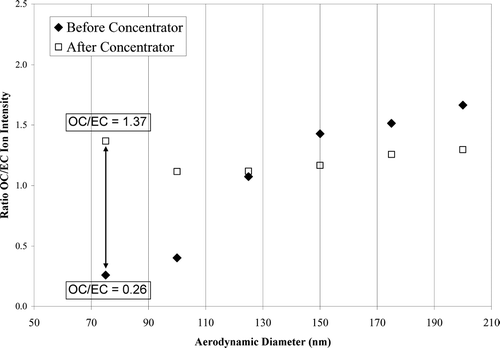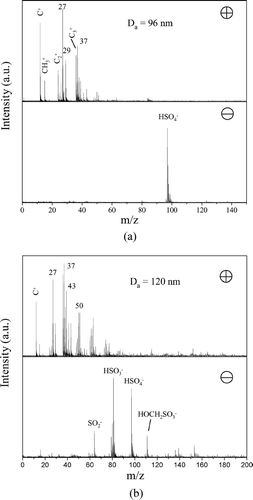Figures & data
TABLE 1 Operating parameters for HUCAPS and its prototype
FIG. 2 Particle number distribution versus particle size for (a) HUCAPS I, (b) HUCAPS III, (c) HUCAPS II, and (d) VACES.
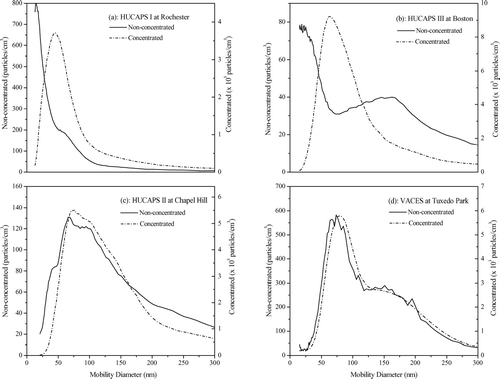
TABLE 2 SMPS statistics for non-concentrated (NC) and concentrated (C) particles and concentration enrichment factors
FIG. 4 Single particle ATOFMS mass spectra for (a) EC, (b) ECOC, (c) OC, (d) PAH, and (e) amine type particles.
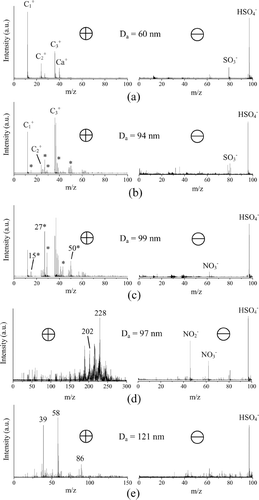
FIG. 5 Number fraction of EC, ECOC, OC, amine, and PAH particles for (a) HUCAPS I, (b) HUCAPS III, (c) HUCAPS II, and (d) VACES.
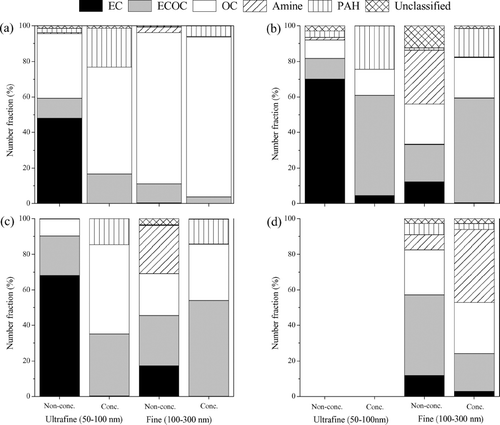
FIG. 6 Average SMPS number distribution versus particle size for non-concentrated and concentrated particles at SR = 2.5, 2.8, and 3.0.
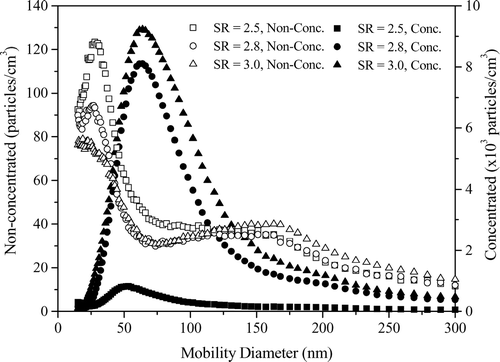
TABLE 3 Concentration enrichment factors and SMPS statistics for non-concentrated (NC) and concentrated (C) particles under different saturation ratio (SR) in Boston
FIG. 7 Number fraction of EC, ECOC, OC, amine, and PAH particles in the (a) ultrafine (50–100 nm), and (b) fine (100–300 nm) modes at SR = 2.5, 2.8, and 3.0.
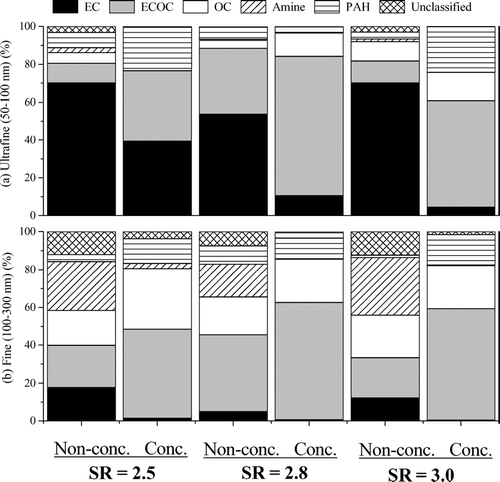
FIG. 10 Number concentration distribution verus particle size for particle-free room air with 13C-containing particles and ambient air with 13C-containing particles.
